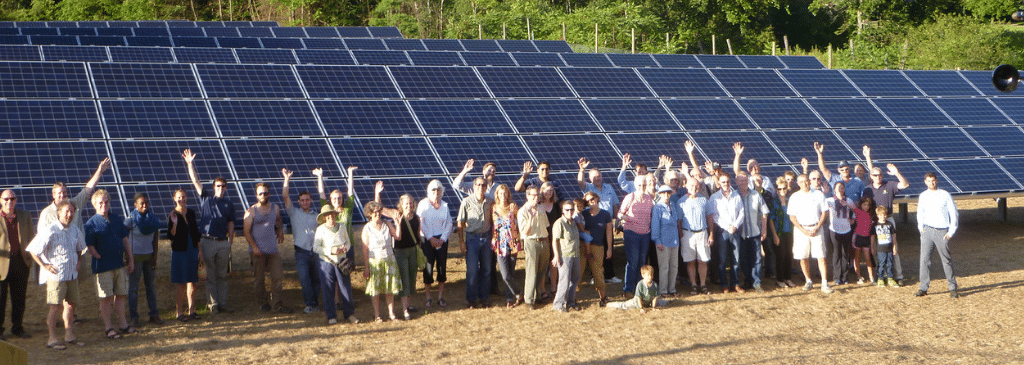It is an “interesting” time for the U.S. PV market. After over a decade and a half of growth, there is concern that the market may contract from its record breaking 14.6 gigawatts (GW) of capacity in 2016 to a still considerable 12.6 GW, according to GTM Research and the Solar Energy Industries Association. Despite continued solid technical and economic progress, policy and marketing forces have buffeted the U.S. market, which continues to act as a hodgepodge of 50 plus segments. One of the concerns has been the residential market, which last year celebrated an accumulated 1,000,000 installations. How fast it can get to 2 million and beyond, and whether the newly emerging community solar market can become a significant complementary or substitute market, is a good question.
On the surface, the residential market has plenty of room to grow. According to the U.S. Census, there are over 60 million detached single family houses, over 5 million attached single family houses and over 7 million mobile homes, so in the aggregate, the U.S. residential market is still working on the second 1% segment.
Many of these houses will not be good candidates for solar for a variety of reasons. Solar access can be a significant reason. The reported ranges of access can be wide spread. Google estimates that up to 4 out of 5 homes can have solar potential. The other end can be built up communities like Cook County, Illinois, where research nonprofit organization Elevate Energy estimates up to 75% of households (not just single family) cannot access solar. These reasons can include not owning a good roof or any roof, or not being able to afford an installation. Other factors can be indifferent or hostile policy by host states or utilities in the form of substandard net metering rates, nuisance or punitive fees or plain legal restrictions.
Add to this tumult has been the shakeup of large scale residential installers either exiting state or entire markets, leaving smaller scale residential installers with a variety of markets, some declining like California, Massachusetts, New York or Maryland; some growing like Utah, Texas, South Carolina, and all the others in between.
Community or shared solar holds promise of being a complementary or substitute market segment in the residential arena, the latter which doubled from 1 gigawatt installed in 2014 to 2 in 2016. There have been many promising startups and initial projects, but what is the expected market? According to GTM, the community solar market has grown from under 100 megawatts (MW) in 2015 to over 200 MW in 2016, an expected 400 MW in 2017 and 500 MW a year by 2019. Over 3 GW are in various stages of development across the US. The National Renewable Energy Laboratory estimates a potential 11 GW community solar market by 2020. Meanwhile, community solar markets have been slow in many places like Illinois to develop as newly enacted legislation must be translated into program action.
Would community solar and residential solar be at loggerheads for residential customers? Fundamentally, the answer appears to be no. There should be plenty of room for both. If residential solar arrays represent an average of 6 kilowatts capacity (the present median residential size according to Lawrence Berkeley National Lab) on 1% of the 70 million of so of single family houses a year, that’s over 4 GW annually, double 2016’s market segment. Other factors like aesthetics, convenience and compensation rates may occur at the margin between whether a single family home owner wants a system on their roof or subscribe for one somewhere else.
Functionally, community solar is a non-residential installation market, even though it directly serves residences. A residential installer may not be able to shift easily. As we have seen in the PV market shakeup, there has been migration of developers and installers toward distinct utility-scale, nonresidential and residential operations. Each has their operating economy, especially large and small residential installers. When the U.S. hits anywhere near Australia’s 20 percent or so residential market penetration, it may be a different story of competition for residential customers between an installation on their roof or not. But that’s a ways off.
This content is protected by copyright and may not be reused. If you want to cooperate with us and would like to reuse some of our content, please contact: editors@pv-magazine.com.








Residential solar is twice the price of Community Shared. If I need a 7kW system to offset my house. I only need a 6kW system in a field. Customer acquisition costs go from $2500 per customer to $250. A 6kw at $1.00 install cost vs 7kW at $2.40. Oh and I can also offset my EV. $18k on my roof $7k in a field. And no holes…
BSW;
Are you saying you can buy into a community solar project for $1.00 per watt?
Frank McIntyre
Glenwood Clean Energy
Glenwood Springs, Co
(970) 618-3424
frank@glenwood-cleanenergy.com